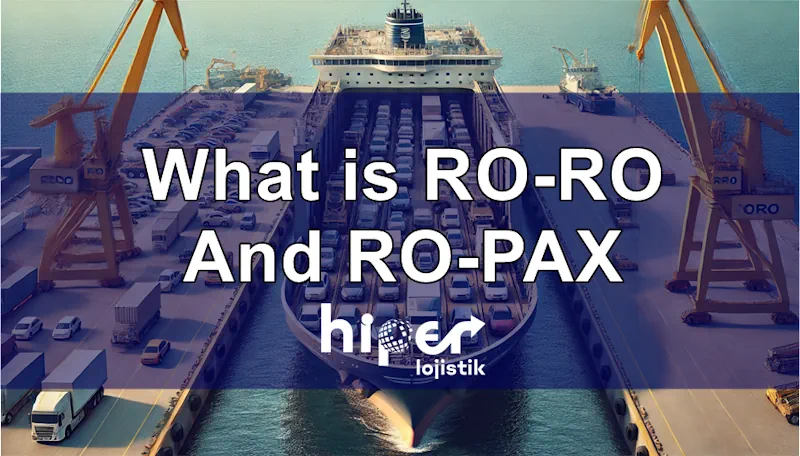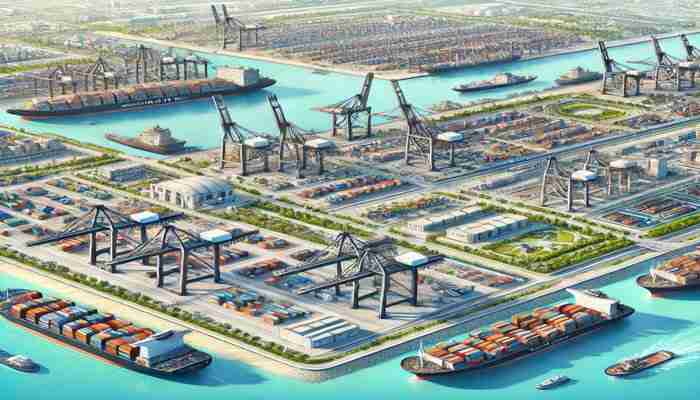
What is TEU (Twenty-foot Equivalent Unit)?
The Twenty-foot Equivalent Unit (TEU) is a standardized measurement used in the shipping and logistics industry to quantify cargo capacity. Specifically, TEU refers to the dimensions of a standard 20-foot shipping container, which measures approximately 20 feet long, 8 feet wide, and 8.5 feet high. The concept of TEU is crucial in global trade, as it provides a uniform method to gauge how much cargo can be transported in shipping containers across various modes of transportation, such as ships, trucks, and trains.
Understanding TEU in Detail
TEU acts as a benchmark that enables efficient coordination and comparison across different shipping routes, container types, and modes of transportation. It simplifies the management of global supply chains by offering a universal measure. While a single TEU represents a standard 20-foot container, a 40-foot container—which is twice the length of a standard container—is referred to as 2 TEUs. This system allows for the easy calculation of capacity and cost for shipping large volumes of goods.
What is Supply Chain Logistics?
TEU Dimensions
A standard TEU measures:
- Length: 20 feet (6.1 meters)
- Width: 8 feet (2.44 meters)
- Height: 8.5 feet (2.59 meters)
In contrast, a 40-foot container (2 TEUs) has the same width and height as a TEU but double the length:
- Length: 40 feet (12.19 meters)
The total volume inside a TEU is roughly 1,360 cubic feet (38.5 cubic meters), making it ideal for carrying non-perishable goods, machinery, textiles, and electronics.
The Importance of TEU in Global Trade
As the backbone of containerized shipping, the TEU plays a vital role in global trade. Containerization revolutionized how goods were transported, as it introduced a secure, standardized, and cost-effective method of moving goods internationally. Ships, terminals, trucks, and railways are designed around the concept of TEUs to ensure smooth transitions between different modes of transport, ultimately leading to faster delivery times and lower shipping costs.
Glossary of Foreign Trade Terms
Usage in Shipping and Logistics
In shipping, TEU is commonly used as a unit to measure the capacity of container ships. For example, large container ships today can carry over 20,000 TEUs. Port operations and logistics companies use the TEU metric to calculate shipping rates, port handling charges, and warehouse storage costs. Knowing how many TEUs a shipment will occupy is vital for cost estimation and space allocation.
Types of Containers Calculated in TEUs
Different containers are also measured in TEUs to ensure standardization:
- 20-foot container: 1 TEU
- 40-foot container: 2 TEUs
- 40-foot high cube container: 2.25 TEUs (due to greater height)
- 45-foot container: 2.5 TEUs
TEU Capacity and Container Ships
The world’s largest container ships, often referred to as Ultra Large Container Ships (ULCS), can carry over 24,000 TEUs. These ships have revolutionized the shipping industry by providing economies of scale. Larger vessels can carry more containers, lowering the per-unit cost of shipping and enabling global trade to flourish.
For example, the Evergreen Ever Ace, which is one of the largest container ships, boasts a capacity of approximately 24,000 TEUs. The increasing capacity of modern container ships has prompted global ports to upgrade their infrastructure, cranes, and handling equipment to accommodate these behemoth vessels.
The Environmental Impact of TEUs
TEUs have had both positive and negative impacts on the environment. On one hand, the standardization of container sizes and the ability to ship large quantities of goods more efficiently has reduced the carbon footprint per unit of cargo. Fewer ships are required for the same amount of cargo, leading to lower emissions. On the other hand, the increasing number of mega-ships has raised concerns about higher emissions from a single voyage, especially given the significant energy required to operate such large vessels.
In response, the shipping industry has started focusing on more sustainable practices by adopting low-emission fuels and implementing carbon offset programs to reduce the environmental footprint of global trade.
What is CMR Transport document?
How TEUs Influence Freight Rates
TEUs are crucial in calculating freight rates. The number of TEUs a shipment occupies influences the shipping cost, as carriers charge by the container size rather than the cargo’s weight or volume. When dealing with Full Container Load (FCL) shipments, the cost per TEU is a key consideration. In contrast, for Less than Container Load (LCL) shipments, freight forwarders consolidate goods from different shippers into a single container, and the cost is distributed based on the space occupied, measured in cubic meters, but the total container is still considered in TEUs.
For international shipping, freight costs are subject to various surcharges:
- Bunker Adjustment Factor (BAF): A surcharge related to fuel costs.
- Currency Adjustment Factor (CAF): Related to currency fluctuations.
- Port Handling Charges (PHC): Related to the cost of handling containers at the port.
How TEUs Contribute to Port Performance Metrics
Ports globally measure their performance based on the number of TEUs handled annually. This metric is essential for port authorities, logistics firms, and governments to assess the efficiency and capacity of a port. For instance, the Port of Shanghai—one of the busiest ports in the world—handles over 43 million TEUs per year.
The efficiency with which a port processes TEUs is a significant factor in determining global trade flows. Ports with high TEU handling capacities are more attractive for businesses looking to optimize their supply chains due to reduced congestion and faster turnaround times for ships.
TEU’s Role in Supply Chain Optimization
TEUs have become a cornerstone in the optimization of supply chains. By understanding how many TEUs their cargo occupies, businesses can optimize their shipping schedules, inventory levels, and storage solutions. Advanced technologies, such as blockchain and IoT, are integrated into supply chain management to track and manage the movement of containers more efficiently.
Businesses aiming to streamline their supply chains focus on the utilization rate of TEUs to ensure that every container is filled to capacity, minimizing empty container movements and reducing costs.
The Future of TEU in Global Logistics
As global trade continues to expand, the demand for shipping capacity in TEUs is expected to rise. Technological advancements and automation in ports and ships are also expected to enhance TEU handling efficiency. Autonomous ships and smart ports are currently being developed to further streamline the movement of TEUs across global shipping routes.
Furthermore, environmental regulations, such as those outlined in the International Maritime Organization’s (IMO) 2020 sulfur cap, are shaping how shipping companies handle TEUs. The push for greener shipping methods will influence how containers are moved in the future, with an emphasis on reducing emissions and improving energy efficiency.
Frequently Asked Questions (FAQs)
1. What is a TEU in shipping?
A TEU, or Twenty-foot Equivalent Unit, is a standardized measure used to quantify the capacity of shipping containers. One TEU represents a 20-foot long container, commonly used in international shipping.
2. How many TEUs can a container ship carry?
The capacity of container ships varies. Some of the largest container ships today, such as the Evergreen Ever Ace, can carry over 24,000 TEUs, while smaller vessels may carry fewer than 1,000 TEUs.






